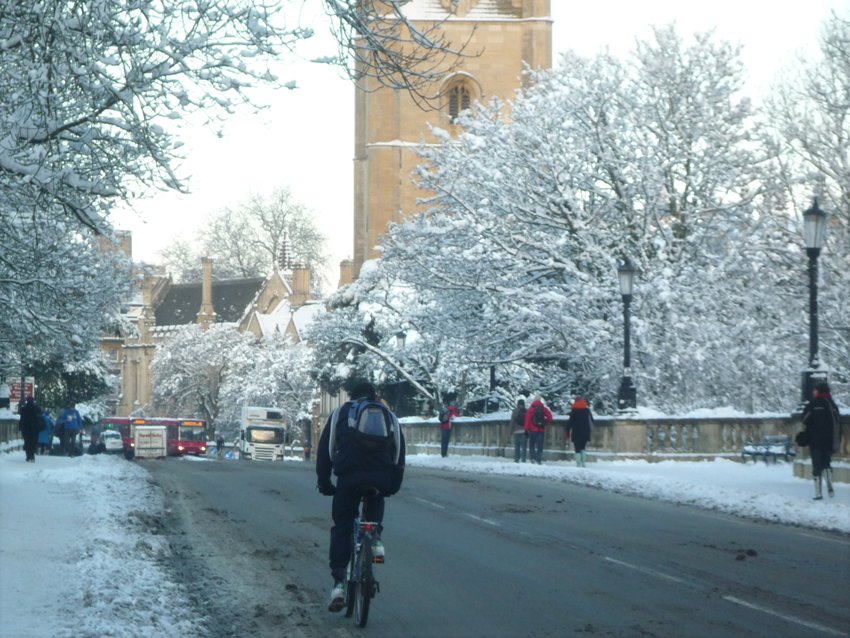Safe, legal and comfortable: how to cycle in winter
By Andy Chivers
Every autumn the shorter cooler days come as a bit of a surprise. After months of riding with little thought about bad weather I am now looking for my waterproofs and thinking about my lights.
What are the essentials for legal, safe, enjoyable bike riding this winter?
Lights and reflectors
We all know that your bike must have lights. You may not be aware though that the law requires reflectors on the pedals as well as the front and rear, so check yours now. It’s good to be as visible as possible so light-coloured clothing is much better than black. A reflective tabard is cheaper and more versatile than a jacket and allows you to wear whatever clothes you want underneath.
Lights have got much better over the years. There are really only two options – either go for removable rechargeable lights or fixed hub dynamo lights. The choice depends on:
- whether your bike is good enough to want to spend £50–£100 on dynamo lights
- how much you are riding at night
Regular bike commuting in the dark deserves every benefit of modern technology going and for me, dynamo lights win hands down – they’re hard to steal, always on the bike so you don’t have to remember them, the light is reliable and bright and, best of all, you provide your own electricity – no need to plug them in or replace batteries. LED lights can almost be too bright so take care to keep them pointing downwards to avoid dazzling pedestrians, particularly when you’re on shared paths.
Brakes and tyres

The other important consideration in wet, slippery weather is having brakes and tyres that do their job. It only takes a moment to check the tread on your tyres. If there isn’t any, a trip to a bike shop is due. At the same time check that the brake blocks are not worn away. It’s quick to do a simple brake test – walk forward a few steps pushing your bike with your hands on the handlebars and then squeeze the front brake sharply (it’s usually the right hand one). The back wheel should rise off the ground as the front wheel stops on the spot. Do the same walking the bike backwards and putting on the back brake.
Clothing
Now you are legal and safe, how can you be be comfortable? Mostly it’s an attitude of mind – you have to enjoy the outdoor air and accept it will sometimes be cold and wet.
Everyone wears a coat in winter but on a bike you also need hat, gloves and mudguards.
Those three are the extra bits of clothing that make the difference. Mudguards may not sound like clothes to you, but it helps to think of them that way. They’ll keep you clean and dry better than any garment. If your bike doesn’t have fittings for mudguards, there are cheap options that fix behind the seat and behind the front wheel and they will keep off the worst.
With Christmas in mind, ask for a present of waterproof trousers and even a pair of neoprene overshoes. You’ll need a pannier or rucksack to keep them in so you have them with you.
Finally, the vexed question of keeping your head dry under a helmet. Some people put on a helmet cover, but the rain still gets down your neck. I favour jackets with hoods. But you need to wear your helmet over the hood, otherwise when you try to look behind you, your head turns into the hood so you see its lining instead of the road, which isn’t very safe.
With such good preparation you will be smiling from ear to ear when the first heavy rainstorm arrives.

4 Responses
[…] waterproof so good for carrying a laptop. I used this one for my commute, as it also fitted all my waterproofs and […]
[…] goes ‘there isn’t bad weather, just inappropriate clothing’, so Matias uses a poncho to keep him dry. The initial complete price of the bike and trailer was approximately £2.5k, but we have easily […]
[…] bike riders need to cope with all sorts of weather conditions, and this December we have had a prolonged spell of cold weather with even a smattering of snow. […]
[…] What are the key accessories for cyclists in winter? […]